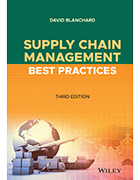How procurement's little-known importance helps supply chain
The procurement department's importance is likely little-known within their own company. But procurement can contribute more than cost analysis to the supply chain.
Procurement is just one part of the supply chain, yet it can have a huge impact on overall supply chain operations. Some supply chain leaders may not realize the little-known importance of procurement and likely believe the department only focuses on cost analysis.
An organization's procurement department finds and purchases the goods the company will use as part of its supply chain. For example, a chair manufacturer's procurement department sources the wood for the chairs, among other components. Procurement attempts to spend as little money as possible during this process so the company will make a profit when it sells its product. The procurement department regularly analyzes every aspect of the procurement process to attempt to cut unnecessary expenditures and save money.
One of procurement's most important responsibilities is supplier relationship management. The procurement department finds suppliers for the company, then oversees the organization's interactions with those suppliers. An organization's supplier relationships are key to the company's success, so procurement must make sure both the company and its suppliers are benefiting from the relationship and that the relationship doesn't hit any roadblocks.
Like the rest of the supply chain, procurement departments have encountered various challenges during the COVID-19 pandemic. For example, consumers purchasing toilet paper and paper towels in bulk in March 2020 forced toilet paper and paper towel procurement departments to rethink their supply chain operations because of the massive demand.
 David Blanchard
David Blanchard
While supply chain leaders work closely with the procurement department, even they may not realize procurement's potential, according to David Blanchard's book Supply Chain Management Best Practices. Supply chain professionals should reevaluate their perception of procurement and reach out to the department about topics other than cutting costs.
Here's an excerpt from Chapter 5 of Blanchard's book in which the author explores the potential for collaboration between supply chain leaders and procurement.
If you ask anybody outside a tight circle of supply chain directors about the role of the procurement department, you'll probably hear that "they're the ones preoccupied with controlling and reducing costs." And yet, while cost reduction will always be a top priority for procurement, it's no longer their sole claim to fame. Some procurement managers, in fact, pride themselves on their ability to create solutions and foster innovation, not merely pinching pennies.
"Many procurement organizations have reached the upper limit of cost reductions possible in categories they are actively sourcing today," explains Chris Sawchuk, leader of consulting firm Hackett Group's global procurement advisory practice. "So they're looking for ways to reinvent their value proposition. A key part of this is expanding their influence, and taking a lifecycle approach to category management. This requires working more effectively with spend owners, executives, requisitioners, suppliers, and other stakeholders. It also calls for skills that are outside procurement's traditional areas of expertise." He points to a Hackett Group study that found that procurement departments are attempting to raise the level of awareness of their contributions by monitoring, measuring, and reporting on their value contributions.
For instance, Eastman Chemical, a producer of specialty chemicals, takes a very pragmatic approach to supply chain management, as its ultimate Procurement 61 objective is to be a reliable supplier to its customers. That approach, basic though it may be, served the company well when it transitioned from producing commodity chemicals to becoming a provider of specialty chemicals. Getting to that point required a full-scale change in Eastman's sourcing function, as the nature of the company's procurement function shifted toward strategic supply management.
As Mike Berry, the company's vice president of global procurement and chief procurement officer, explains, Eastman has a five-point strategy to ensure the company's sourcing practices meet the needs of its customers:
- Integrate procurement with supply chain operations. Supply chain processes are cross-functional, and Eastman follows a talent management strategy that moves employees through various functions and departments within the company.
- Collaborate with internal business partners. In addition to its crossfunctionality strategy, Eastman aligns procurement resources with sales and operations planning (S&OP) teams, to better share market insights across departments.
- Develop supplier strategies. Not all suppliers are alike, and neither should be your procurement approaches to them. Berry points out that, with commodity suppliers, Eastman focuses on cost, while with strategic suppliers, the company focuses on driving value and innovation.
- Continually develop and improve capabilities to deliver results. Eastman automates its supply chain processes using inventory optimization and other technology solutions. The company is also investing in staff development to better train its next generation of leaders.
- Contribute to the company's success. "We in procurement are known as nontraditional thinkers, even contrarians, in our approach to analyzing markets," Berry says. "We focus more on market insights and business strategy than traditional procurement." For instance, when appropriate, the procurement department has leveraged alternate methods and sources of supply, and has found competitive advantage through creative contracts that engage Eastman's suppliers in ways that drive innovation.
"Procurement must know how to document its own innovation and the impact it has on enterprise growth and be able to convince the rest of the organization that procurement's expanded value proposition is real," Sawchuk observes. He adds that procurement's role in risk mitigation efforts should be better appreciated and leveraged. No other department is in a better position to identify early signs of financial distress among suppliers, he notes. Procurement can also evaluate alternative sourcing arrangements, and develop what-if scenarios to recognize supply network risks while building resiliency.
Excerpted with the permission of the publisher, Wiley, from Supply Chain Management Best Practices by David Blanchard. Copyright 2021 by John Wiley & Sons Ltd. All rights reserved. This book is available wherever books and eBooks are sold.








